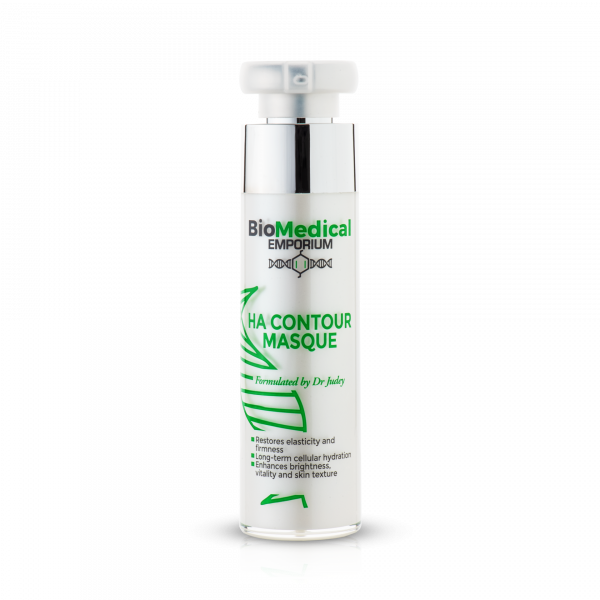411
Exclusive | The rise of Ozempic face: The rapid weight loss side effect everyone is talking about

By Dr Judey Pretorius, founder of Biomedical Emporium
Ozempic has taken the world by storm. It’s almost impossible to go on social media without seeing someone mentioning it, and nearly everyone knows someone who has taken it or tried to get their hands on it.
Ozempic first made headlines in 2021 when it was featured on an episode of The Dr. Oz Show titled “Could a diabetes drug cure obesity?”. Before long, celebrities from all walks of life started singing its praises, including Kelly Osbourne, Whoopi Goldberg, and even Oprah. Considered a “wonder drug” for weight loss, Ozempic – and other drugs designed for the treatment of type 2 diabetes – is now rapidly prescribed for weight management in an attempt to manage the obesity crisis.
The demand for this drug is high, but opinions about it vary. While it’s praised by many for its weight loss capabilities, many people are worried about the potential long-term effects of taking a drug to serve a purpose it was not initially intended for.
Regardless of your stance on it, one of the most common side effects of losing weight with Ozempic is a phenomenon known as “Ozempic face.” For those hoping to achieve their dream body, this unwanted side effect may be enough to make you think twice. But what exactly is Ozempic, and how does it affect the appearance of your face?
What is Ozempic?
Originally designed for the treatment of type 2 diabetes, Ozempic is a weekly injection that helps lower blood sugar by stimulating the pancreas to produce more insulin. It helps those with diabetes manage their blood glucose levels and prevents the dangerous complications associated with the condition.
Ozempic works by mimicking a naturally occurring hormone (known as GLP-1), which regulates appetite by telling your brain that you are full. It also slows digestion, allowing you to feel fuller for longer. When taking Ozempic for type 2 diabetes, weight loss is a common side effect.
What is Ozempic face?
Rapid weight loss is often more pronounced on the face and can result in a significant change in appearance.
The term “Ozempic face” came about when people started noticing that those who had lost a lot of weight using the drug appeared to develop sagging and rapidly ageing facial skin. Not only did their face look “hollowed out”, but their lines and wrinkles become more pronounced, and their skin appeared “looser” or saggier in areas such as the jowls. It’s important to note that the term “Ozempic face” is a colloquial phrase and not a medical term.
Facial fat serves an essential purpose: It has a protective function and helps maintain the skin’s elasticity. When the fat that cushions the skin is no longer there, it may lead to shrinkage and dermatological changes.
Due to the reduced levels of elastin and collagen in the absence of fat, facial skin may lose its ability to retract, resulting in a loss of structural integrity. This is what leads to the sudden onset of a sagging, tired, gaunt and aged appearance.
These facial changes are not exclusive to Ozempic and other GLP-1 drugs; they may occur in any instances of rapid weight loss. However, that’s just it – when a significant amount of weight is lost naturally through adopting a healthy lifestyle, the changes are gradual and not as noticeable, as it takes longer for the body to shed the weight. With a GLP-1 drug, the weight loss occurs rapidly, making the facial changes far more noticeable.
But Ozempic face is not just about ageing skin. There are also serious concerns about the drug’s effects on facial contours and bone structure.
Studies suggest that the use of Ozempic may lead to muscle mass loss, potentially due to the body breaking down muscle tissue for energy. It may also decrease bone density, a concern that is already common among ageing men and women.
What can be done?
Like all things in life, prevention is better than cure. Losing weight gradually, rather than rapidly, may help mitigate some of the unwanted effects of rapid weight loss on facial skin. However, if you have already lost a significant amount of weight and are noticing the impact of Ozempic on your face, there are several steps you can take to improve your skin and overall appearance.
Many people are quick to recommend dermal fillers to combat loss of volume and elasticity; however, the risks of filler migration need to be considered when making this decision, as filler migration may lead to more significant challenges over time.
We recommend the following:
Professional treatments, such as injectable bio-stimulators (treatments that stimulate the body’s natural collagen production) and skin-tightening procedures like micro-needling (also referred to as collagen induction therapy), are effective in improving skin sagging and loss of volume when administered at least once a month.
High-concentration hyaluronic acid (HA) skincare products, which contain hyaluronic acid of various molecular weights, may help increase the skin’s plumpness while providing it with ample hydration. Low molecular weight HA penetrates deeper into the skin, while medium molecular weight HA provides plumping and hydration on the skin’s surface. Sodium Hyaluronate is the salt form of HA and can bind large amounts of water to hydrate skin. Use a high-quality topical hyaluronic acid product that contains a range of molecular weights to ensure the ingredient penetrates the various layers of the skin, yielding the best results.
Try Biomedical Emporium HA Contour Masque. It boosts the production of extracellular matrix components such as collagen and elastin, thereby rejuvenating the skin while decreasing the appearance of lines and wrinkles, all while providing long-lasting hydration and restoring skin moisture.

Picture: Supplied
Collagen drinks may help improve the skin’s elasticity from within, as well as aid in systemic collagen rebuilding, which is essential for reducing volume loss.
Try Biomedical Emporium Skin Biotic Collagen Supplement. It restores the healthy bacteria in the gut, while collagen peptides aid in slowing down the ageing process.

Picture: Supplied
Don’t underestimate the importance of exercise. We know that the use of Ozempic can result in muscle mass loss, and the most effective way to increase muscle mass is through regular exercise. Even moderate exercise, such as walking, can make a noticeable difference.
Ozempic face is a significant concern for those who lose a lot of weight while taking the drug. By understanding the risks and symptoms associated with Ozempic, patients are empowered to make informed choices and take proactive steps from the start.
For more information, visit www.biomedicalemporium.com
Follow Joburg ETC on Facebook, Twitter , TikTok and Instagram
For more News in Johannesburg, visit joburgetc.com















